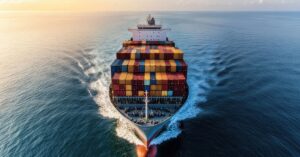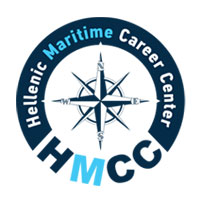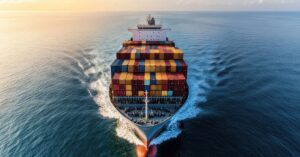
World Shipping Council Launches Updated Global Whale Chart To Reduce Ship Strikes
November 7, 2025
China’s First Domestically Produced Aircraft Carrier Fujian Enters Service
November 8, 2025

China has revealed detailed plans for what could become the world’s largest nuclear-powered cargo ship. The vessel, designed to carry 14,000 standard containers, will be powered by a thorium-based molten salt reactor (TMSR) producing 200 megawatts of thermal power, the same level as the reactors used in the U.S. Navy’s Seawolf-class submarines.
The concept of this ship was first introduced in 2023, but technical details have only now been made public. The information was shared by Hu Keyi, a senior engineer at Jiangnan Shipbuilding Group, in an article published in Ship & Boat, a Chinese trade magazine.
Hu explained that the 200MW of heat from the thorium reactor won’t directly move the ship. Instead, it will run a supercritical carbon dioxide (sCO₂) generator using the Brayton cycle, a process that turns heat into electricity very efficiently.
This system will generate about 50MW of electricity, enough to power the ship across oceans for years without refuelling. Hu mentioned that the new design achieves 45 to 50 percent efficiency in converting heat to electricity, compared to around 33 percent in traditional steam-based nuclear systems.
The ship will also have a 10MW diesel generator for emergencies.
According to Hu, one of the biggest advantages of this design is safety. The thorium molten salt reactor operates at normal atmospheric pressure and doesn’t need water for cooling, which makes it smaller, quieter, and safer than conventional reactors.
The reactor also has a strong built-in safety feature, if the temperature rises too much, the reaction automatically slows down. In case of a serious malfunction, the molten salt fuel would flow into a special chamber where it cools and solidifies, locking in radioactive materials and preventing contamination.
The entire reactor is built as a sealed modular unit with a 10-year lifespan. Instead of refuelling it, the whole unit will be replaced after a decade, reducing the risk of leaks or human errors during maintenance.
This cargo ship is part of China’s effort to develop advanced nuclear technologies. In 2025, China’s experimental thorium molten salt reactor in the Gobi Desert became the first in the world to achieve long-term stable operation.
While the United States built a thorium reactor in the 1960s at Oak Ridge National Laboratory, that project was abandoned due to corrosion problems. China has continued the work and now benefits from its large thorium reserves, especially in Inner Mongolia.
Hu also said that China is working on other nuclear-powered designs, such as a Suezmax oil tanker using a lead-bismuth cooled fast reactor and a floating nuclear power plant using high-temperature gas-cooled reactors.
Hu noted that while the technology shows great potential, there are major financial and operational challenges. Building a nuclear-powered cargo ship costs far more than constructing a regular one.
He explained that private companies face difficulties getting financing and insurance for nuclear ships due to safety concerns. There are also added costs for training specialised crews, maintaining the reactor, handling used fuel, and decommissioning.
Although nuclear fuel is inexpensive, the long-term success of such ships depends on whether the savings from reduced fuel costs can make up for the high construction and maintenance expenses. Hu said government support might be necessary since private companies alone may not be able to handle the risks.
China has also recently achieved another breakthrough by successfully converting thorium into uranium fuel inside a molten salt reactor, a key step proving that thorium can work as a practical energy source.
If this technology can be applied on a larger scale, it could change the future of commercial shipping. Experts believe thorium-powered ships could operate for years without refuelling, with less risk and pollution compared to conventional systems.
References: SCMP, interestingengineering
Source: Maritime Shipping News


